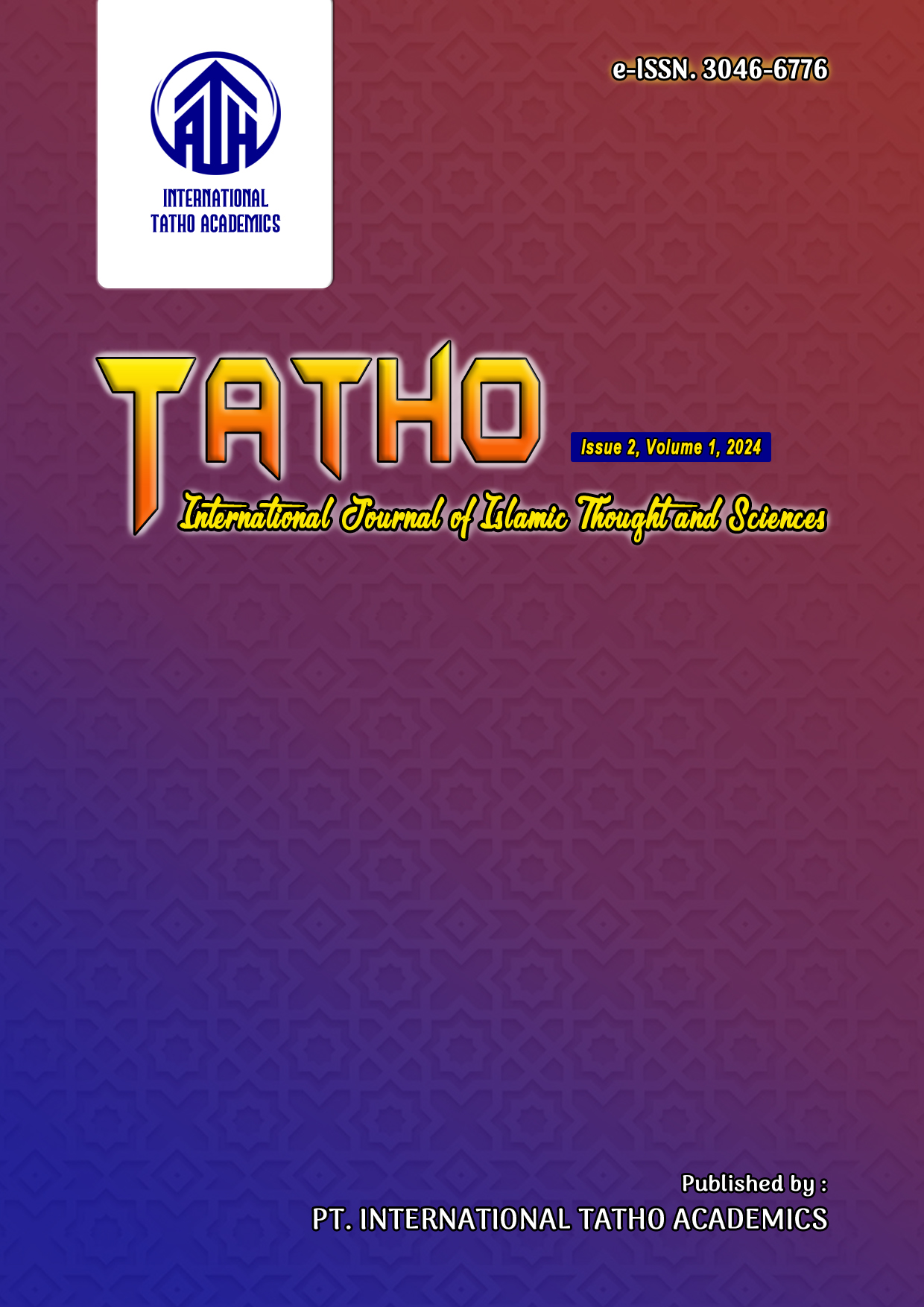Animation In Hadith Prohibition Maqasid Syariah Perspective
DOI:
https://doi.org/10.70512/tatho.v1i2.17Keywords:
Animation, Hadith, Maqasid Shari'ah, Drawing Living Creatures, MessagesAbstract
Conveying messages through the medium of an animated video in today's life has become a necessity. However, there are still pros and cons to animation as a medium. One of them is the Islamic religious view of this work because it is related to drawing behavior. This situation creates a dilemma for animators because on the one hand, this job is a job that is quite in demand with relatively high pay, while on the other hand, work as an animator is more related to drawing activities because in a hadith there is a prohibition against drawing. This article focuses on what is the role and function of animation in human life today? How does animation serve various positive purposes in various aspects of human life today from a maqasid sharia perspective? The important conclusion of this article is that animation provides a number of benefits in maintaining and applying maqasid sharia because it has great power to influence human thoughts currently using visual-based technology. Whereas animator is a profession that provides benefits in the field of visual-based Islamic education and preaching, 3. Understanding the hadith which prohibits drawing living creatures needs to be reinterpreted in the context of Muslim life today.
Downloads
References
Asyur, I. (1996). Maqashid Syari’ah Islamiyah Ibnu Asyur. Tunisia: Daarussalam
Chris, W. (2005). Animation The Mechanics of Motion. London: Focal Press
Dozan, W. (2020). Seni Dalam Perspektif Hadis Nabi: Kajian Ma’ani al-Hadis. Riwayah: Jurnal Studi Hadis, 6(2), 325-342. http://dx.doi.org/10.21043/riwayah.v6i2.7863
Frank, T. (1997). Ollie Johnson. Disney Animation The Illusion Of Life. New York: Abbeville Press
Haryadi, T. Teori Animasi - Teknik Animasi Traditional, Stop Motion dan Rotoscoping. (online) from https://bit.ly/3NuAzFP, acessed on 14 Juni 2023.
Ismail, Muhammad, Siti Nur, & Yusephalandi. (2018). Teknik Animasi 2D dan 3D. Bandung: Dinas Pendidikan Provinsi Jawa Barat
Jean, Ann Wright. (2005), Animation Writing And Development From Script Development To Pitch. London: Focal Press
John, Halas., & Roger Manvell. (1971). The Technique of Film Animation. London: Focal Press
Kurnianto, Arik. (2015). Tinjauan Singkat Perkembangan Animasi Indonesia dalam Konteks Animasi Dunia, (online) from https://bit.ly/3NFpwKd accesed on 14 June 2023
Muḥammad. (2020). Qurʾan Karim dan terjemahan artinya. Trans by Zaini Dahlan. Yogyakarta: UII Press
Nawawi, Abu Zakariyya Mahyudin an-. (1981). Sahih Muslim bi Syarah an-Nawawi, Mesir: al-Matba’ah Mishriyyah bil Azhar
Purnomo, Wahyu, & Wahyu Andreas. (2013). Teknik Animasi 2D. Malang: Kementrian Pendidikan dan Kebudayaan
Qaraḍāwī, Yūsuf., (1980). Halal dan Haram dalam Islam. Surabaya: Bina Ilmu
Richard Williams. (2001). The Animator’s Survival Kit. London: Faber & Faber
Sabiq, Sayyid. (1987). Fiqih Sunnah Jilid 14. Bandung: Alma’arif
Syatibi, Abu Ishaq. Asy, (1999). Al-Muwafaqat Fii Ushuli Syari’ah. Beirut: Daarul Kutub ’Ilmiyah
Wells, Paul. (2013). Understanding Animation. London: Routledge.
Zain, M. (2018). Kontekstualisasi Hadis Larangan Menggambar Dengan Desain Grafis. Riwayah: Jurnal Studi Hadis, 4(1), 101-124. doi:http://dx.doi.org/10.21043/riwayah.v4i1.2843
Downloads
Published
Issue
Section
License
Copyright (c) 2024 Karlin Permata Suri, Yusdani Yusdani, Hamidullah Marazi

This work is licensed under a Creative Commons Attribution-ShareAlike 4.0 International License.








